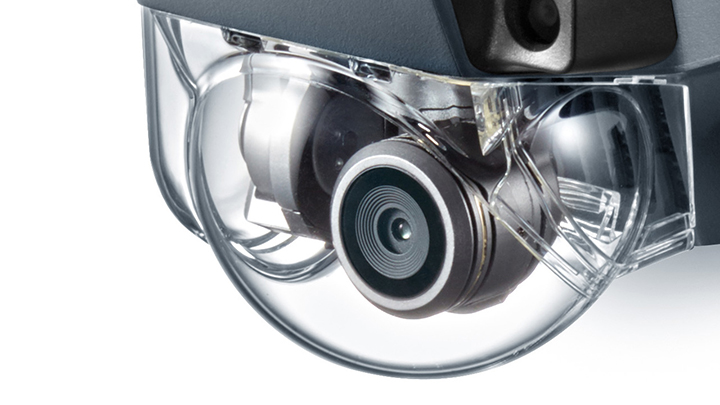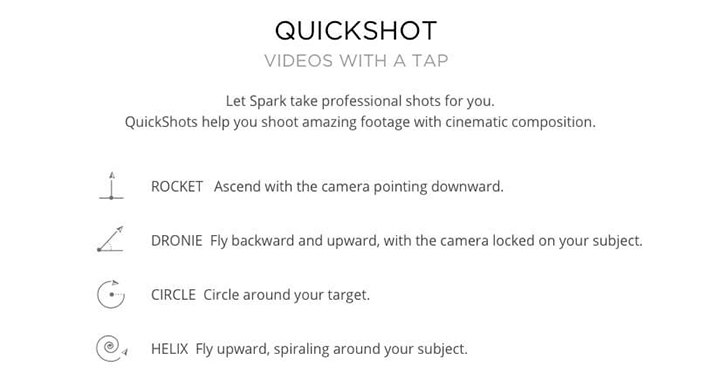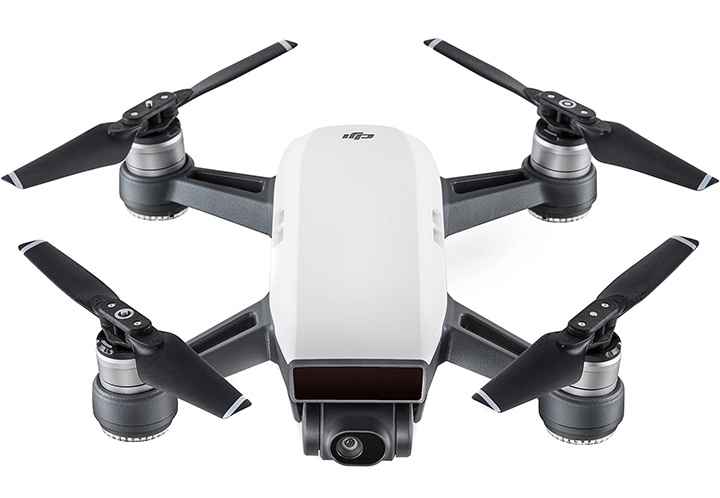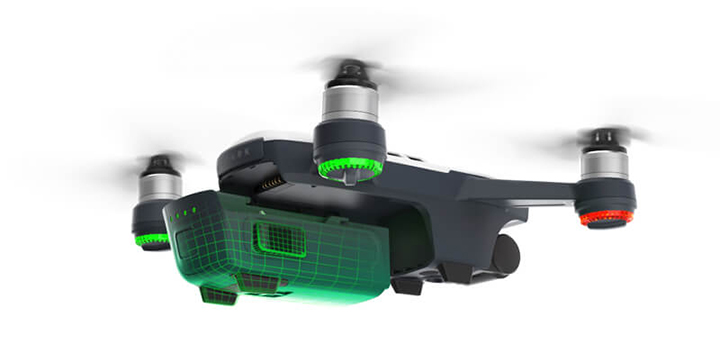DJI has successfully tapped the main markets of the drone industry from industrial and professional use, rescue operations, and now, the consumer market for amateur users. With the release of the DJI Spark, it promises portability and performance which are evidently borrowed from the Mavic Pro from late last year.

We’ve been getting a lot of questions from both our readers and friends if they should buy the Mavic Pro right now (more expensive but better specs) or wait for the Spark to arrive (more affordable but not yet available). This quick guide will show where these two quadcopters differ and hopefully help you decide which to go for if you’re in the market for a new portable drone.
While the Spark definitely is smaller than the Mavic Pro when flying, it has fixed arms which make it slightly wider than the Mavic when folded up. This means that the Mavic Pro could still occupy a narrower space when packed and is more compact to squeeze in between things. Although when folded out, the Mavic Pro is inarguably larger and double the size of the Spark.

DJI Spark beside Mavic Pro with cans for reference.
Dimensions at their most compact are at 3.2 x 3.2 x 7.8 inches for the Mavic and 2.1 x 5.6 x 5.6 inches for the Spark. It also weighs a lot less than the Mavic Pro — 300 grams (with battery) against 734 grams.
The Spark also inherited the front obstacle-sensing radars of the Mavic Pro although the performance of both differ in maximum reach and speed. The Spark can ‘see’ obstacles in front of it between 1-16 feet while flying up to speeds of 10.8kph. The Mavic Pro takes that further and is able to sense obstacles between 2-49 feet ahead while going as fast as 35.4kph.

Altitude range or the height at which it can use its vision positioning is also in favor of the Mavic Pro at 43 feet compared to that of Spark’s at 26 feet. On the other hand, both have the auto maneuver feature that makes them go around and avoid the obstacle on their line of path.
In terms of imaging, both the Spark and Mavic Pro carries the same sensor size at 1/2.3 inches. They are CMOS sensors although the Spark has the most shallow aperture of F2.6 compared to the Mavic at F2.2. This gives the Mavic Pro an advantage to shoot better for low light scenarios. Although, the Spark has something new up its sleeve called the ShallowFocus for producing bokeh-like shots and Pano modes for vertical and horizontal panoramas.

Image resolution shows that the Mavic is once again more capable as it can shoot up to 4K at 30fps (video) and 12.71MP (photo), whereas the Spark can only go for Full HD at 30fps (video) and 12MP (photo). Finally, image stabilization is handled by the Mavic using a 3-axis gimbal while the Spark only offers a camera mounted on its 2-axis setup.
In terms of available flight modes, Spark has the features of the Mavic Pro like Tap to Fly and Active Track which are all useful — although DJI has blessed the Spark with new modes unique to it as of now, at least.

This includes QuickShot feature which is basically programmed maneuvers to help you take different shots with ease. There’s Rocket, Dronie, Circle, and Helix — all of which are not found on the Mavic Pro.
Additionally, the Spark also has PalmControl that lets you move it during flight simply by using your palm (like a true Jedi, you’ll become).
Distance or the maximum range the drone can go without experiencing loss of transmission could be of utmost importance when you try to get an epic establishing shot of an island, for example. Luckily, the Mavic Pro can reach its farthest range of up to 7kms away thanks to its very own OccuSync technology.

On the other hand, the Spark can only go as far as 2kms away from the user while using the dedicated controller. Without the remote control and using simply a mobile device and the app, both the Spark and Mavic Pro can only go as far as 100 meters in distance and 50 meters in height.
For me, this is a great consideration for choosing between the two. Would you like to spend time with your drone filming and perfecting your shots? Or you simply want a selfie drone to bring out every once in a while?

Having an answer for this should already help you choose a side since the Mavic Pro and its 3830mAh battery can last in the air for up to 27 minutes on a single battery, while the 1480mAH-equipped Spark could only offer 16 minutes of flight time due to its smaller form factor and capacity. Also take note that the number of minutes claimed by DJI were derived under the perfect flying conditions. Based on personal experience, my Mavic only lasts around 20 minutes every flight with video recording and the presence of wind taken into consideration so expect the battery life of the Spark to be shorter in real-life usage.
Finally, the pricing. DJI made the Spark a more affordable option if you don’t want to dive straight into something expensive more so if you’re just starting out in the world of quadcopters. The Spark was announced with a $499 price tag for the basic bundle without the remote control and if you go for the Fly More Combo, you’d have to shell out a total of $699. The Fly More Combo for the Spark includes extra propellers, propeller guards, an extra battery, power cable, charger, and a charging hub.
The Mavic Pro, however, starts at $999 for the basic package (but already comes with a remote). If you want the FlyMore Combo with an extra battery, batter charging hub, car charger, battery to power bank adaptor, and shoulder bag, prepare to pay $1,299.

So, in the end, which should you go for? We would say that you first decide how you plan to use it as we have mentioned in the Battery Life section. Are you planning to buy a drone that you’d want for professional use? Then go for the Mavic Pro that packs more capable specs in its arsenal. Or maybe you’re just a casual user that want an easy, no-hassle way of flying and adding different angles to your selfies? The DJI Spark might be for you — considering you’re still willing to wait for it to be available here.

Apple, Asus, Cherry Mobile, Huawei, LG, Nokia, Oppo, Samsung, Sony, Vivo, Xiaomi, Lenovo, Infinix Mobile, Pocophone, Honor, iPhone, OnePlus, Tecno, Realme, HTC, Gionee, Kata, IQ00, Redmi, Razer, CloudFone, Motorola, Panasonic, TCL, Wiko
Best Android smartphones between PHP 20,000 - 25,000
Smartphones under PHP 10,000 in the Philippines
Smartphones under PHP 12K Philippines
Best smartphones for kids under PHP 7,000
Smartphones under PHP 15,000 in the Philippines
Best Android smartphones between PHP 15,000 - 20,000
Smartphones under PHP 20,000 in the Philippines
Most affordable 5G phones in the Philippines under PHP 20K
5G smartphones in the Philippines under PHP 16K